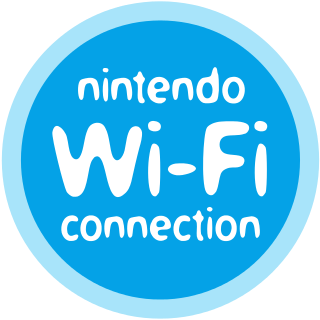A jet pack (or jetpack) is a jet-powered or rocket-powered device, usually worn on the back, that allows a person to fly.
Contents
Jetpack or Jetpac may also refer to:
A jet pack (or jetpack) is a jet-powered or rocket-powered device, usually worn on the back, that allows a person to fly.
Jetpack or Jetpac may also refer to:
Hotspot, Hot Spot or Hot spot may refer to:

Wi-Fi is a family of wireless network protocols based on the IEEE 802.11 family of standards, which are commonly used for local area networking of devices and Internet access, allowing nearby digital devices to exchange data by radio waves. These are the most widely used computer networks, used globally in home and small office networks to link devices and to provide Internet access with wireless routers and wireless access points in public places such as coffee shops, hotels, libraries, and airports to provide visitors.

A jet pack, rocket belt, rocket pack or flight pack is a device worn as a backpack which uses jets to propel the wearer through the air. The concept has been present in science fiction for almost a century and the first working experimental devices were demonstrated in the 1960s.

A hotspot is a physical location where people can obtain Internet access, typically using Wi-Fi technology, via a wireless local-area network (WLAN) using a router connected to an Internet service provider.

Lunar Jetman is a horizontally scrolling shooter developed and published by Ultimate Play the Game. It was released for the ZX Spectrum in 1983 and later on the BBC Micro. In this sequel to Jetpac, the second instalment of the Jetman series, Jetman has to destroy alien bases whilst simultaneously defending himself, along with Earth, from a hostile alien race.

Nintendo Wi-Fi Connection was an online multiplayer gaming service run by Nintendo to provide free online play in compatible Nintendo DS and Wii games. The service included the company's Wii Shop Channel and DSi Shop game download services. It also ran features for the Wii and Nintendo DS systems.

Tethering or phone-as-modem (PAM) is the sharing of a mobile device's Internet connection with other connected computers. Connection of a mobile device with other devices can be done over wireless LAN (Wi-Fi), over Bluetooth or by physical connection using a cable, for example through USB.

An ultra-mobile PC, or ultra-mobile personal computer (UMPC), is a miniature version of a pen computer, a class of laptop whose specifications were launched by Microsoft and Intel in Spring 2006. Sony had already made a first attempt in this direction in 2004 with its Vaio U series, which was only sold in Asia. UMPCs are generally smaller than subnotebooks, have a TFT display measuring (diagonally) about 12.7 to 17.8 centimetres, are operated like tablet PCs using a touchscreen or a stylus, and can also have a physical keyboard. There is no clear boundary between subnotebooks and ultra-mobile PCs, but UMPCs commonly have major features not found in the common clamshell laptop design, such as small keys on either side of the screen, or a slide-out keyboard.
Wi-Fi calling refers to mobile phone voice calls and data that are made over IP networks using Wi-Fi, instead of the cell towers provided by cellular networks. Using this feature, compatible handsets are able to route regular cellular calls through a wireless LAN (Wi-Fi) network with broadband Internet, while seamlessly change connections between the two where necessary. This feature makes use of the Generic Access Network (GAN) protocol, also known as Unlicensed Mobile Access (UMA).
Mobile VoIP or simply mVoIP is an extension of mobility to a voice over IP network. Two types of communication are generally supported: cordless telephones using DECT or PCS protocols for short range or campus communications where all base stations are linked into the same LAN, and wider area communications using 3G or 4G protocols.

My Life Online (Mylo) was a device created and marketed by Sony for portable instant messaging and other Internet-based communications, browsing Internet web sites using the Opera web browser and playback and sharing of media files. The pocket-sized, tablet-shaped handheld device, which debuted in 2006, had a screen which slid up to reveal a QWERTY keyboard. The brand name 'Mylo' means My Life Online. Using Wi-Fi instead of cellular networks, the Mylo was targeted to the 18–24 age group.
An Adaptation kit upgrade updates Microsoft's Windows Mobile operating systems for devices.
WorldLink Communications is an Internet service provider in Nepal. The nation's largest ISP, it has 900,000 active consumer accounts and 2,000 business accounts, along with approximately 25,000 subscribers to its NET TV IPTV service, and covers 73 of the nation's 77 districts. As of 2023, it has around 700,000 fiber to the home customers and 31% market share in Nepal.

MiFi is a brand name to describe a wireless router that acts as a mobile Wi-Fi hotspot device.

The Samsung Galaxy Tab 7.0 or simply Samsung Galaxy Tab is an Android-based mini-tablet computer produced by Samsung and released on 5 November 2010. The tablet was first introduced on 2 September 2010 at the IFA in Berlin. The Galaxy Tab was the first Samsung Android-powered tablet to be released.
The Samsung Galaxy R (Royal) (GT-I9103) is an Android smartphone that was announced by Samsung on August 10, 2011 as a variant to the Samsung Galaxy S II.
The E5 is a mobile Wi-Fi device produced by Huawei Technologies, and is part of the company's mobile Wi-Fi series that includes the E5830s, E585, E583c and E586. The E5 series connect to other devices using a wireless interface. The devices are pocket size and allow users to access the Internet through any Wi-Fi device, mobile phone, game console, digital camera, notebook and personal digital assistant (PDA).
LTE in unlicensed spectrum is an extension of the Long-Term Evolution (LTE) wireless standard that allows cellular network operators to offload some of their data traffic by accessing the unlicensed 5 GHz frequency band. LTE-Unlicensed is a proposal, originally developed by Qualcomm, for the use of the 4G LTE radio communications technology in unlicensed spectrum, such as the 5 GHz band used by 802.11a and 802.11ac compliant Wi-Fi equipment. It would serve as an alternative to carrier-owned Wi-Fi hotspots. Currently, there are a number of variants of LTE operation in the unlicensed band, namely LTE-U, License Assisted Access (LAA), MulteFire, sXGP and CBRS.

Hum is a vehicle diagnostic and tracking system from Verizon Communications. The system is composed of two devices: a diagnostics reader which connects to a vehicle's OBDII and a speaker with Bluetooth connectivity that can be clipped to the visor. A monthly subscription is required, but also includes a mobile application for reviewing collected data and receiving alerts as well as roadside assistance. The Hum was first revealed in January 2015 under the name Verizon Vehicle, but was rebranded before its release in August of that year.
Jetpack man, also described as guy in a jetpack or Iron Man, is an unknown person or object that has been observed flying what appears to be an unauthorized jetpack around the Los Angeles area at least five times from 2020 to 2022. Multiple airplane pilots have reported seeing the jetpack man at altitudes around 5,000 feet (1,500 m).